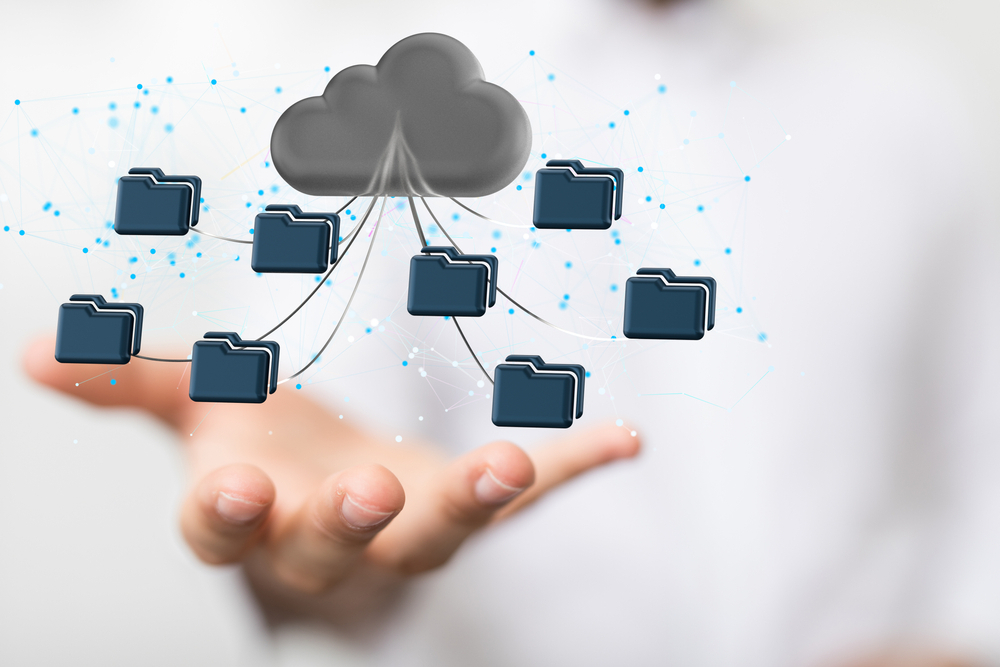What is Data Migration: Strategy, Best Practices, and Challenges
“Without big data, you are deaf and blind and in the middle of a freeway.” - Geoffrey Moore.

The world is going through massive digital transformation, and data has become the new currency. Being a driving factor and a great asset for businesses, you can utilize data to drive innovation in your company.
Consistent data analysis can help businesses make informed decisions and streamline existing workflows. But you require robust data structuring to proceed to the analysis stage. And if the data collected is not properly categorized or not removed from the silos, key information can be missed, and erroneous analytics will be generated.
Frequent data migrations are becoming the new reality for solid data consolidations. It is an important element of data management and can help your organization gain a holistic view of your business to unlock its maximum potential.
But there’s much to understand about data migration before you use it for your business. Let's dive in to understand why data migration is the need of the hour in streamlining your operations.
What is data migration?
Data migration involves transferring data from databases, storage systems, and file formats from one storage system or computing environment to another. The process becomes necessary for an organization in the case of:
Overhauling an entire system
Establishing a new data warehouse
Upgrading database
Merging new data from a different source
Data migration is linked to organizations moving on-premises infrastructure to cloud storage for better remote access for its workforce.
It might sound simple to move data from one software/application to another, from one location to another, or from one format to another, but multiple complexities may arise during the process. Those can be solved using tailored strategies, following best practices, and understanding your requirements.
Apart from the commonly known data migrations, you must know a few important ones.
Types of Data Migration
Out of multiple data migration types, here are the top six data migrations that are highly vital for businesses.
1. Software migration

It is referred to as rebuilding the system from scratch, implementing the same functionalities and features with the latest technologies. Software migration also involves securely migrating your databases, servers, and websites from in-house or cloud databases.
Software migration is linked to software modernization, where you can restructure your old software with modern developing technologies and change different major elements. You can improve the efficiency of your system, add an intuitive, modern, and user-friendly interface, reduce errors, and increase the system's scalability using software migration.
2. Website migration

An end-to-end website migration involves transitioning from your existing website to a new one without involving the risk of losing your current website traffic and data.
You can migrate your website from one domain, server, platform, or cloud to another using effective ways to ensure zero downtime. Businesses require professional assistance with website migration because one wrong move can cause poor experience for your website visitors. Website migration can ensure your audience reaches your website using old links and help you transfer the SEO authority from your old website to the new one.
3. Cloud migration

Moving your organizational applications, company’s digital assets, databases, services, and IT resources to a secure cloud infrastructure is known as cloud migration. It can help your enterprise increase agility, flexibility, resource demands, consumption management, scalability, and develop faster for better business performance.
4. Enterprise platform migration

It involves moving your enterprise databases without hindering business efficiency. Fast and efficient enterprise platform migration can help you remove operational burdens and ensure you increase your business scalability.
The enterprise platform migration process analyzes the compatibility, data security, and other gaps before migration to ensure a smooth transition.
5. Application migration

You can optimize your application performance using application migration by migrating legacy applications to a modern cloud ecosystem. Application migration involves refactoring, modernizing, and scaling business applications for enhanced user experience.
It can be complex, so you must have a robust application migration strategy that involves consideration of individual applications’ technical requirements, enterprise compliance, security, and cost constraints.
6. Storage migration

Improve your business efficiency by transferring data from outdated storage premises to modern storage platforms. It can help you free up your hardware assets and increase the efficiency for better data access.
The storage migration involves the planning, migration, and validation phase, which ensures that your data is placed in a more secure and efficient platform.
Now that you understand the major data migration types, it’s time to learn about the different data migration strategies your business might require.
Data Migration Strategy
Enterprises need a detailed road plan to help them effectively complete the migration process and achieve their desired business results. Data migration strategy broadly involves planning, execution, and testing of the migration process, which can enhance the performance and competitiveness of your organization.

It also offers multiple benefits to enterprises and makes them efficient with the migration by minimizing friction.
Why is a data migration strategy required?
Data migration strategy improves the existing workflows and the overall business ecosystem with effective migration results.
Without a tailored data migration strategy, businesses encounter poorly executed data migrations. It can result in inaccurate data, redundancies, and other major issues that require remediation.
Here are a few vital benefits of a well-vetted data migration strategy:
1. Better data usage
Once the data is organized properly using a tailored strategy, it can be leveraged more effectively. Also, smooth data migration to one place in a single format can reduce the need and cost for multiple hardware components and systems.
2. Avoid missed deadlines and project failures
A comprehensive data migration strategy can ensure you don’t miss out on deadlines, budgetary overruns, or other major problems resulting in data migration project failure. With step-by-step planning, you can reduce the guesswork during the execution of the data migration and boost the efficiency of the process.
3. Agile and accurate migration
A full migration strategy can ensure you accomplish the data migration task more quickly and accurately.
These benefits can ensure you complete the desired data migration without complications and streamline your results.
But you must consider the security and compliance of your data migration strategy. Taking the right cybersecurity and regulatory measures can help you avoid fines and penalties for non-compliance and data breach risk.
Apart from these two important components, there are more key factors to consider while finalizing your data migration strategy.
Key things to consider while building a data migration strategy
Migrating your important business data requires thorough care and a robust strategy to complete the process. Here are the five tried-and-true components essential for formulating your data migration strategy:
1. Planning
Deciding which data requires migration and which system is best helps to set up a strong foundation. You must evaluate and anticipate the impact of migration on your business stability.
Once done, ensure you set a date and action steps for initiating the migration process. It can help you brief your team members about their roles and responsibilities during the data migration process.
2. Analyze and design solutions
Analyze the data and the overall business ecosystem to understand how you’ll decommission legacy systems. Also, think from a technical standpoint about completing the required data migration process to ensure that the data quality is not impacted.
3. Testing and validation
Once you get the planning and overall analysis results, another major component of the data migration process is building and testing the software logic to automate the migration. It can help you save time and effort to achieve desired results without manual intervention.
You should test the developed code in a mirror sandbox environment or use additional software tools and third-party resources to handle the scale of the process.
4. Execution and protection
You must check and validate that the migration software and processes are ideal for your business ecosystem. Your team should check whether the data migrated safely in the ideal form and to the desired location.
Also, once the data is migrated, you must protect your data quality to ensure that it remains reliable and doesn’t undergo degradation.
5. Decommissioning and post-migration audit
Disposing and shutting down old legacy systems are important to ensure that your data migration strategy is successful. Also, once you have completed the migration process, don’t forget to track and report the data regularly.
Implement the right governance strategies to monitor and audit the overall data and its usage to unlock your desired digital transformation results.
Integrating these key components into your data migration strategy allows you to securely migrate the data to its desired destination with minimal disruption to your business workflows.
But during the migration process, you might encounter different real-time challenges which you must tackle with finesse.
Top Data Migration Challenges
Although data migration processes have been handled by businesses for decades now, businesses still face many difficult encounters in completing the process without hassles. Here are the five top data migration challenges:
1. Lack of integrated processes
The overall data migration process typically involves different teams relying on different technologies. Businesses use disparate technologies to finalize processes like analysis, development, testing, and implementation, which can lead to failure in data migration.
There might be data loss in translation which can increase the cost and wasted time. You must create an ecosystem that links the critical inputs and outputs for different data migration stages to reduce error and save time and money.
2. Lack of documentation
It can become a major roadblock during the data migration process from legacy systems. You can understand the migration requirement and how to complete the process with proper documentation.
You must fill the gap between the data migration team and the legacy system developers. Clear communication and robust documentation can simplify your data migration process and provide a clear path to your migration teams.
3. Inconsistent data
Incomplete or inconsistent data can be the core reason for multiple complexities in your data migration process. Because of human error or outdated data sources, you might encounter missing data sets, which can hinder data migration.
Before kick-starting the migration process, you must check and maintain a complete and accurate data set. Use techniques like data cleansing and normalization to improve the quality.
4. Failure to validate the migration
Testing and validating your migration at full scale under real-time conditions can help you analyze a wider range of possibilities and ensure you are ready to handle the worst-case scenario.
Not testing various scenarios can increase the risk of encountering problems while performing your day-to-day operations, which can hinder operational efficiency.
5. Source data troubles
Issues may arise with your data migration process if you are unaware of the problems in your data, like duplicates, misspellings, missing information, and erroneous data.
You must understand the source data well to ensure minimal issues during data migration to the new system.
These challenges might arise during the execution of your data migration, so you must follow the data migration best practices to reduce the impact of these encounters.
Data Migration Best Practices
Irrespective of the data migration you want to complete, there are some data migration best practices you must know:
Data backup is important
You must secure your sensitive data to prevent loss from unexpected accidents during migration. Choose secure data backup resources to safeguard critical data from being lost if something goes wrong during the migration process.
Different secure cloud locations are great for maintaining data backups. Also, thoroughly test your backup ecosystem to ensure your data's safety.
Align with the data migration strategy
To ensure your data migration process is smooth and bypasses potential complexities, you must stay in line with the planned strategy.
Although you can optimize your strategy depending on the real-time situation but not following the data migration plan can cause serious troubles.
Rigorous testing
Integrate a professional test plan that analyzes the performance of your data in the latest system and maps out issues to ensure optimum data management. Also, during the planning, design, and implementation process, you can achieve your desired migration results only if your data remains consistent and there’s no overtime degradation in the quality.
Following these best practices can help you complete your data migration process and carefully handle a major aspect of your business’s digital transformation.
Why is data migration important in business transformation?
Data migration is helping businesses to improve their data analytics processes to obtain valuable insights and consolidated data.
It helps businesses to predict the future accurately, optimize their existing business workflows, and assist their workforce in delivering the best results. These factors can pile up to drive business transformation, which can help you stand out.
Here are some more reasons data migration can drive business transformation:
Improved operational efficiency
Data migration can help you create a centralized environment that can simplify data management. With secure cloud migration, your team gets free from data troubleshooting, which can help them focus on more core business operations and increase overall efficiency.
Greater agility
One of the standout benefits of data migration is better business agility. Quick migration to the cloud ecosystem allows you to move between different platforms and applications depending on your business scenario.
Better decision-making through data analytics
Data migration to a modern cloud ecosystem makes it easier to use analytics, access data from any location, and make informed decisions. You can steer the business in the right direction by analyzing the customer and industry trends to improve your product or services.
Talking about trends, you must know the latest trends which highlight the increased data migration adoption globally. It can help you paint a crystal clear roadmap on how to use data migration for your business.
Top Data Migration Trends
Data migration has become frequent for modern businesses because of the humongous amount of data generated every second. Here are the top three trends that highlight the mass recognition of data migration to solve specific business problems.
1. Cloud adoption
With the surge in data quantity, the cloud has become the new space to migrate business data. It helps businesses to bypass the hassles of managing the physical hardware ecosystem and reduce the drawbacks of latency environments.
The demand for data migration is increasing with fast-growing cloud adoption globally. Apart from large enterprises, small and medium-sized organizations are also expected to use data migration for transferring their data to the cloud ecosystem.
2. Changing business ecosystem
Businesses from different industries recognize the importance of data migration. They are using data migration to improve their data analysis capabilities. Multiple sectors are using data migration and in-depth analysis for different purposes to simplify their business operations.
With the advantages of data migration and data analysis being understood by different business sectors, there will be a shift in demand between industries and job functions.
3. Data modernization
The increasing need to move data from legacy databases to modern databases has boosted the data modernization process globally. Businesses are using data modernization to structure and classify their unstructured data available in the old databases.
The refined and restructured data can deliver better results and minimize the efforts for data analysis. Businesses are actively chasing the benefits of scalability, flexibility, performance, cost reduction, and expanded functionality by transferring data from one database to another.
Businesses, big or small, must adapt to data migration to ensure they stay ahead in the industry and make the most of their staggering data collection.
Following a planned data migration strategy can help businesses to achieve great growth and drive towards enhanced decisions making with data analysis.
But before going ahead with data migration, you must understand your data migration goals, sources, and strategies. Thoroughly analyze the data migration challenges and follow the best practices to bypass them and accomplish the business transformation.
